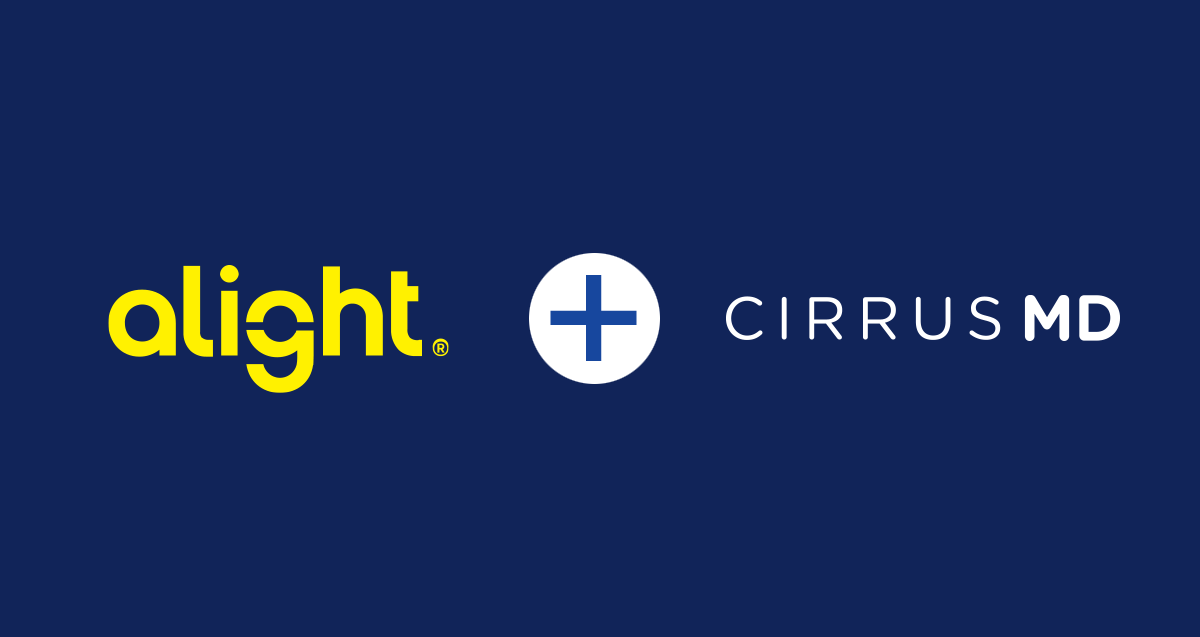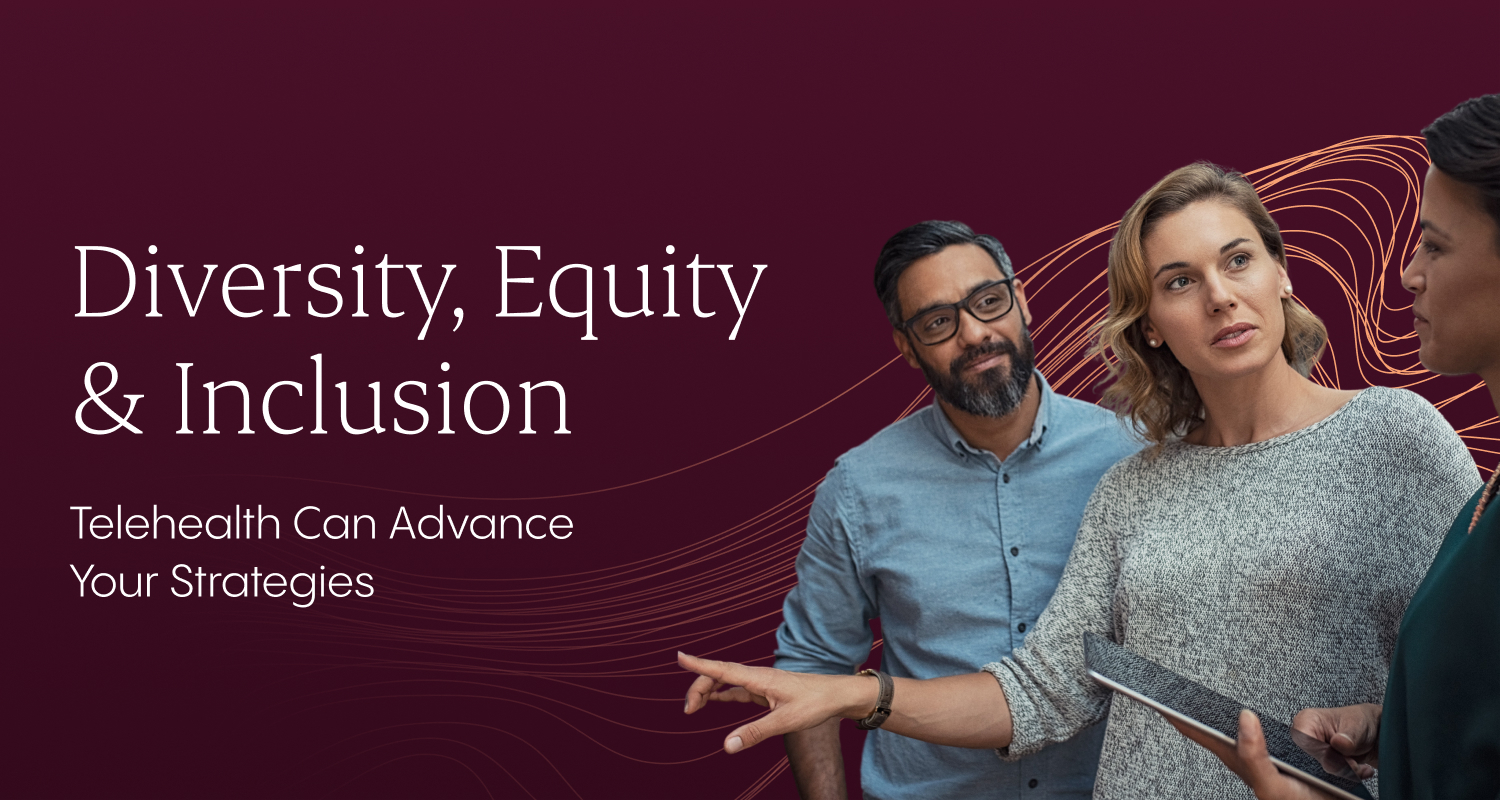Q: Often the oversight of DE&I programs falls within HR. For those with DE&I responsibility, what's an important consideration about their benefits programs?
A: The most important thing is to actually think of health benefits as part of your DE&I strategy. As you look for opportunities to create more equity and inclusion across your workforce, there are a lot of different focus areas. But health benefits are a direct opportunity to get people what they really need.
Some of our partners have made the decision to offer telehealth programs, such as CirrusMD, to their full employee population, including both enrolled employees who have a standard health benefit package, as well as their part-time employees. What they're finding is greater equity. Part-time employees have traditionally lacked the health benefits to keep them safe and healthy in the workforce. Offering them a direct connection to a doctor can be life changing for employees and their families.
Q: Who is being unserved or underserved by traditional healthcare benefits?
A: I always look first at who's not using their healthcare benefits and the reasons why. Do they live in a rural location, and face issues like limited access to primary care physicians and specialists? Do they feel uncomfortable with their local provider networks? Maybe they've had a bad experience in the past, or they feel judged. Perhaps they’ve felt discriminated against within the existing system, based on race or background, or even their insurance type.
I also think about deskless workers, who have a difficult time accessing traditional healthcare or making appointments. They may work in a noisy, crowded environment that doesn’t afford them any privacy for a phone call or especially video. They may not have available PTO to schedule and take time away for doctor appointments. Even with most virtual care options, wait times and long queues can be challenging — these folks can’t step away three hours later when a phone call comes in from a physician. Traditional healthcare has always taken place on the provider's terms, not the patient's.
What I’ve seen come to fruition at CirrusMD is the ability to reach underserved people. Our platform is unique in that it first meets the consumer wherever they are, but then, is completely barrier free. It allows folks to engage without the burden of legacy healthcare issues like bandwidth for video, wait times for primary care offices and appointments, discrimination, even paywalls. Our physicians have created trust among populations who most often don't access healthcare until they're in a dire situation, and even gotten them to engage regularly for health and wellness.
By providing an on-demand physician, where all the patient needs is their smartphone for texting, the employee can get what they need. Maybe even when they’re in the break room, during the only 15 minutes of the day they have available.
Q: Why would an employer use CirrusMD when they already have a telehealth program through their health insurance provider?
A: What we often hear from employers is that while they are giving their employees some version of telehealth, it's not meeting their needs. The most typical reason would be that they're not getting the engagement levels that they want, so the service isn’t solving employees’ problems around access to care. That could be because an employer has 10 different health plans. Through those 10 different health plans, they may have 10 different telehealth offerings. So when an employer is trying to provide specific guidance to their employees, they can't simply say, "Go to CirrusMD." They have to say, "Go through your health plan, and find your access point." It’s not making it easier to get care.
Our really powerful partner relationships are ones where they can offer CirrusMD to all of their employees. This is not only access to a physician, but we also become an extension of the HR team's ability to provide support and wellness to their population. By partnering directly with one vendor, it’s easier and more effective to communicate about wellness opportunities, direct patients to other employee resources, and really just fulfill the needs of keeping their population healthy.
Recently with one of our largest retail customers, we had the opportunity to help them deploy paid time off following an employee’s second COVID vaccine, which was really important for their part-time employees to help encourage them to keep themselves vaccinated and safe as frontline workers.
Q: Some employers report they’re using savings from using CirrusMD with their benefited employees to provide CirrusMD to uninsured workers. How does that model work?
A: We start with the employee population for which the employer takes on risk. Within that enrolled population, we're offering them a more accessible, less expensive access point to a physician. So for every hundred visits — where an employer would typically be paying a high cost ER visit, including a blend of primary care and urgent care — we're diverting employees to a virtual visit at a much lower cost. We take that bucket of savings and can calculate the savings. So for an employer with a large workforce, for example, you saved six million dollars in diversion savings last year for your enrolled population. This can fund providing this benefit to your part-time employees.
Layered on top of a fairly cost-neutral model, we can also help employers retain their part-time workers, which is incredibly important. By offering them benefits like access to a doctor, especially to an employee who might not have health benefits themselves, this could be a reason they want to stay with their employer. The combination of diversion cost savings and the element of retention savings makes a benefit like CirrusMD really powerful among both enrolled and unenrolled.
Q: What should benefits leaders consider as they structure programs for next year?
A: Employers are introducing more point solutions to solve specific problems for their employees, which is great. We're seeing an influx of digital solutions for the employees, but in turn, that also means employees have to make decisions about which services to use and when. Often HR benefits teams are not staffed to answer those questions.
Bringing in a partner like CirrusMD, with the resources to both solve general medical concerns and also navigate employees to other solutions when needed, is going to help employers improve the return on investments they’ve made across all platforms. As solution vendors, we need to act as part of an ecosystem, and find really seamless ways to understand the employee population, what solutions they're being offered, and then help bridge gaps to find the next solution they need for follow-up.
Q: What does an employer really get when they offer telehealth to their uninsured / unenrolled employees?
A: Today’s employers are thinking more and more about their employees’ quality of life.
When you offer a part-time employee a direct connection to a physician—especially an employee who's not offered an insurance product through their employer — it can change their life. We’re addressing the pain experienced by employers with a high percentage of underserved and uninsured workers, and helping them improve the employee’s experience.
What we hear from our partners providing CirrusMD to their part-time employees is that this is a benefit that really can change people's lives. For let's say $12 a year, the employer is able to say, "You have a doctor in your pocket who will respond to you in under a minute for any of your healthcare needs." That's extremely powerful. And in this era of The Great Resignation, where part-time employees are switching jobs because they’re being offered a higher wage at a different employer, having a service like on-demand care is a real reason someone would choose to stay. We're seeing real impact on retention and employee satisfaction, as employee care becomes an even more critical factor in making a decision to stay with an employer.





